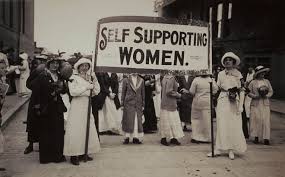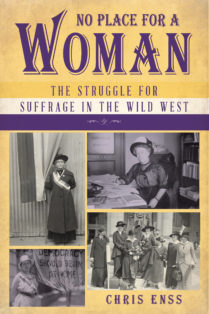Last Chance to Enter to Win a Copy of the book
No Place for a Woman: The Fight for Suffrage in the Wild West.

When Susan B. Anthony and Abigail Scott Duniway stood before the Women’s Rights Convention in Olympia, Washington, in 1871, they were joined by three women who had come west as “Mercer Girls,” young women recruited by Asa Shinn Mercer to come to the Pacific Northwest to work as teachers—and as prospective brides for the men who made up the vast majority of the population in Washington Territory. Women went west for a variety of reasons during the Great Migration of the nineteenth century, coming along with husbands and fathers, but also traveling solo for reasons that included job opportunities, homesteads in some places where they were allowed for single women, and the prospect of more freedom.
Myth and the historical record both place women in professions in the West, where there were shortages of doctors, dentists, lawyers, and journalists, when they might have been denied those same opportunities in the East. Bethenia Owens-Adair, for example, emigrated to Oregon with her family as a small child and then returned to the East to go to medical school, eventually setting up a practice in Portland, Oregon, where she participated in the suffrage movement in the 1880s. Martha Hughes Cannon was a doctor in Salt Lake City in the 1890s, when she also ran for—and won—a seat in the Utah legislature. May Arkwright Hutton went west to the silver camps of Idaho where she started out as a cook in a mining town and became a silver tycoon and philanthropist in her own right. Other women went west to be singers, other performers, photographers, social workers, restaurateurs, scouts, and homesteaders—as well as to take up less savory professions and to be mail-order brides.
Perhaps because educated women went west to practice their careers, perhaps because the mere fact that they were pioneers gave them the conviction that anything was possible, and perhaps because the nascent governments of the West offered pathways to reform that were simply more straightforward than those in more established states, the reforming zeal swept across the West, and by 1920, when the Nineteenth Amendment was ratified, the women of the West were already voting.


